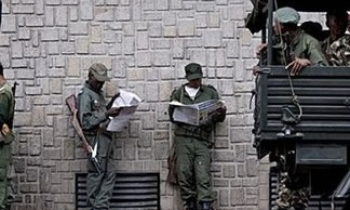BILOXI, Miss. - Mississippi's Hurricane Katrina story fell victim to the media's craving for the "sexy" story and to a national public's hunger for dramatic footage of rescues from rising levee waters rather than the destruction of a coastline, media critics and observers agree.
The story of Katrina's damage in Mississippi quickly took second place to a levee breach in New Orleans that flooded the lower Ninth Ward and St. Bernard Parish. But because the two happened within hours of one another, the national media mixed the two into one story and New Orleans became the focus of the hurricane coverage.
Media veterans also conclude the coverage was "heroic," even though the majority of the national media had pulled out by two months after the storm.
Howard Kurtz, media critic for the Washington Post, said most of the satellite trucks and embedded national press left with the rescue helicopters.
"While the media excelled at crisis coverage with some obvious lapses, journalists are less good at covering the long and frustrating process of reconstruction," Kurtz said. "And for too many media outlets, the unbelievable damage to part of America was off the radar screen after a few weeks when there were no longer dramatic pictures of people being rescued from the roof of their homes."
An Internet search revealed that in the first month after the disaster, The New York Times printed more than 1,000 stories that mentioned Katrina.
But far fewer stories about Katrina have been printed in subsequent months. Between May 29 and June 29 of this year, for instance, just 108 stories mentioned the storm.
South Mississippi never got the appropriate national attention, Kurtz said.
"With some exceptions, Mississippi is being greatly overshadowed in the national media coverage because of the prominence of New Orleans and all the flooding there. I can see where that would be a very frustrating situation because of people still suffering."
Kurtz said the reason New Orleans became the focal point is simple.
"The reality is that journalists deal in simple," he said. "If there is an earthquake in Pakistan that kills tens of thousands, the story would tend to focus on one family because the abstract numbers are hard to grasp."
Historian Douglas Brinkley, who lives in New Orleans but once resided in Bay St. Louis, is author of "The Great Deluge," a book about the storm that fills 700 pages.
He believes the Mississippi story isn't as juicy.
"What do you say about Bay St. Louis? That everybody pulls together and saves lives? It was a great story, but New Orleans was a debacle."
Curtis Wilkie, Cook Chair in Journalism at the University of Mississippi who spent 26 years at the Boston Globe, said most of the stories he read were "heroic."
Wilkie, whose home in the French Quarter survived Katrina, said some fact-checking was sacrificed by the national broadcast media.
"I was critical of some of the TV coverage I saw because it seemed out of control and unfiltered and maybe because so much of it was being reported live but there was a lot of misinformation that got out."
In an article Wilkie wrote in December for the quarterly Nieman Reports, a magazine by the Nieman Foundation for Journalism at Harvard University, he also said both broadcast and print reporters didn't verify a few wild claims of rape, murder and "wanton terrorism" made by some New Orleans public officials.
Melissa Ludtke, editor of the Nieman Reports, said the media coverage of the storm exposed shortcomings in journalism, including the need for more attention to the working poor, societal gaps and race issues, among others.
She said the winter 2005 and spring 2006 editions of Nieman Reports feature stories about Katrina and are aimed at raising awareness among journalists to consider those sources that are often left out of any story, not just disasters.









